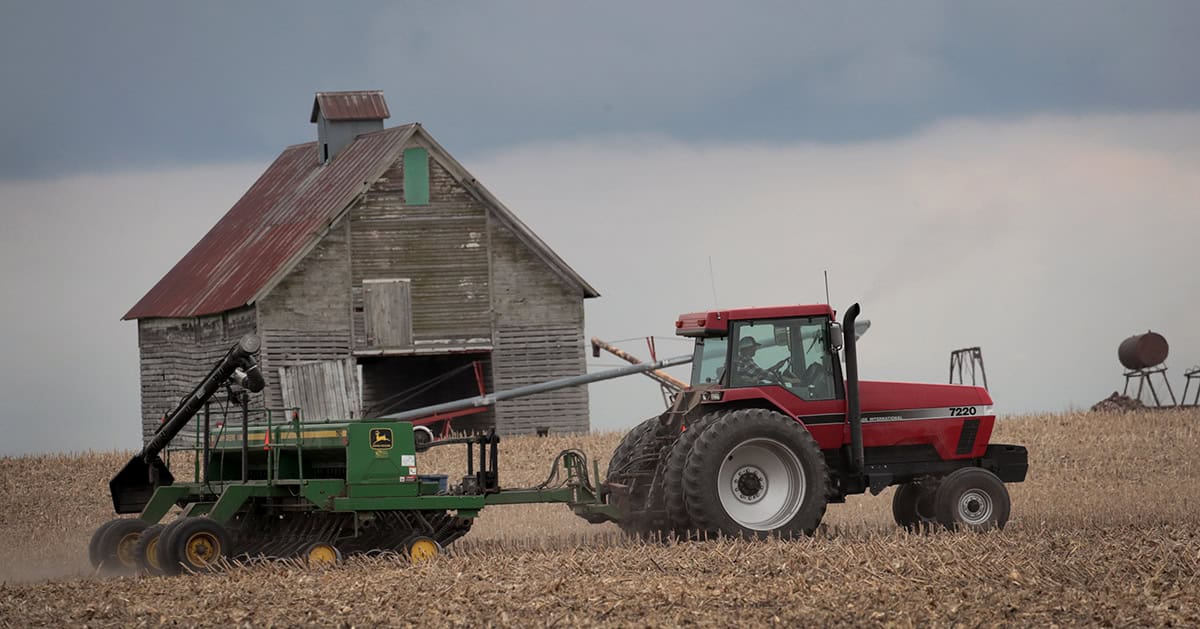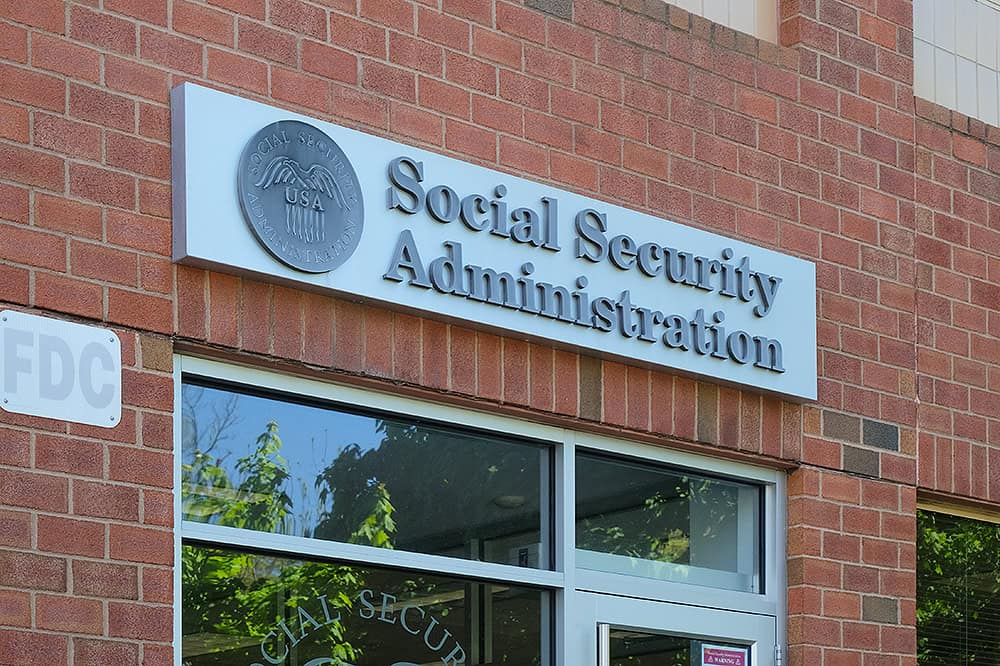U.S. Population Growth Is Slowing Down — Here’s What That Means for the Federal Budget
Last Updated April 2, 2025
Projections by the Census Bureau indicate that the U.S. population will grow much more slowly than it has in the past. That trend will contribute to a shrinking labor force and, therefore, to slower growth in gross domestic product (GDP). Slower economic growth — combined with the aging of the population, the rising cost of healthcare, and mounting interest costs — will put significant pressure on the federal budget in the years ahead.
U.S. Population Growth Is Declining
Since the 1990s, U.S. population growth has been declining. 2000 was the last year during which year-over-year population growth was above 1 percent, and the U.S. Census Bureau does not anticipate that population growth will exceed that level again. Instead, the Bureau projects that the population growth rate will continue to decline over the coming decades — from 0.5 percent in 2025 to 0.1 percent in 2055. Over the next 30 years (2026–2055) according to the projections, the current population of 338 million people will only increase by 23 million. By comparison, over the prior 30 years (1995–2024), the population grew by 70 million people.
Why Is the Rate of Population Growth Declining?
Changes in the U.S. population are driven by two factors:
- Natural change: the number of births minus the number of deaths within the country, and;
- Net international migration: the movement of people into and out of the United States.
Together, those factors determine how much the U.S. population grows or declines. Historically, both determinants have been positive. However, the Census Bureau anticipates that deaths in the U.S. will exceed births in 2038 and that the gap will continue to grow thereafter.
Underlying that trend are lower fertility rates and increasing life expectancy. The total fertility rate (TFR) is the average number of children a hypothetical cohort of women would have in their lifetime and reflects the ratio of births to women. The TFR reached its peak in 1957 at 3.7 children per woman. Since then, the TFR has declined, falling to a historic low of 1.6 in 2020. The Census Bureau projects that the total fertility rate will not recover and will remain around 1.6 over the next 30 years. At the same time, life expectancy has been increasing. From 1995 to 2025, life expectancy at birth increased by 4.2 years for males and 2.5 years for females, and the Social Security Administration projects that life expectancy will continue to grow through 2055: another 3.1 years for males and 2.6 years for females. Along with lower total fertility rates, higher life expectancy leads to an aging population and is projected to lead to negative natural change as the number of deaths grows while the number of births declines.
Immigration could potentially offset lower natural growth rates. However, because net international migration is sensitive to policy changes, the Census Bureau keeps that factor fairly stable in its projections.
Why Does Population Change Matter for the Federal Budget?
As natural change restrains population growth, the U.S. population will grow older, on average. An older population means that the ratio of people 65 and older to working-age people (25–64), called the old-age dependency ratio, will be larger. In 2025, the Bureau projects there will be 37 people age 65 or older for every 100 working-age people; by 2055, that ratio will have grown to 46 people age 65 or older per 100 of working age (an increase of 26 percent). As the old-age dependency ratio increases, it will pose a greater fiscal and economic challenge for the United States by putting pressure on programs like Social Security and Medicare as well as on the labor force, which could make economic growth more difficult.
A Slowdown in the Labor Force Could Strain Economic Growth
Reduced population growth could affect the U.S. labor force and put pressure on economic growth. Because the labor force is a subset of the population, a declining growth rate tends to signal a declining labor force participation rate. That is important because labor force growth is an integral component of economic growth.
From 1950 through 2007, growth in the potential labor force accounted for roughly half of all growth in real (inflation-adjusted) potential GDP (a measure of the maximum sustainable output of the economy). From 1983 to 1993, the labor force grew by an average 1.5 percent each year and real GDP grew at an average annual rate of 3.4 percent. However, since the late 2000s, growth in the labor force has diminished — and with it growth in real potential GDP. From 2013 to 2023, the labor force grew by half of the earlier rate (0.7 percent, on average) and real GDP rose by an average annual rate of 2.3 percent (a full percentage point lower than in the 1983-1993 period).
The Congressional Budget Office projects that growth in the potential labor force will continue on that trajectory, remaining lower over the next 30 years. Slower population growth, diminishing fertility rates, and generally restrained immigration have contributed to the slowdown in potential labor force growth, and that could lead to the U.S. labor force beginning to decline in the next few decades. In the upcoming decade (until 2035), the labor force and GDP are projected to grow at smaller rates than historical averages — 0.6 percent and 1.8 percent, on average annually, respectively.
In fact, the Census Bureau projects that 2054 will mark an inflection point for working-age people in the United States, when the number of people ages 18 to 64 will — for the first time — begin to decrease. That could put a strain on economic growth as less labor is available and, as a result, make growth even more dependent on gains in productivity. In all, an aging population with slower labor force growth could worsen pressures on the budget as revenues are restrained.
The Aging of the Population Will Put Pressure on Social Security and Medicare
Social Security and Medicare are the largest programs in the federal budget, accounting for just over a third of all federal outlays in 2024. Spending on the programs will increase as the population ages and the number of individuals age 65 or over grows. Further, both Social Security’s Old-Age and Survivors Insurance (OASI) and Medicare’s Hospital Insurance (HI) trust funds are financed through payroll taxes, which ties funding for the programs to wages.
As the number of retirement-age individuals accelerates and growth in the working-age population slows, the ratio of workers to beneficiaries will decrease. As a result, the federal government’s ability to continue to finance those programs through traditional means will become more daunting. In 1995, there were about four covered workers for every OASI and HI beneficiary. Both the Social Security Administration and the Centers for Medicare and Medicaid Services project that in 2025 there will be about one less worker for every beneficiary. Over the next 30 years, the worker-to-beneficiary ratios are projected to again decline by about one worker for both programs, leaving only two covered workers for every beneficiary. The Social Security and Medicare trust funds are already facing depletion in the near future, and the aging of the population will only continue to put pressure on the financing of the programs.
Conclusion
Over the next 30 years, the United States faces an aging population and a slowdown in population growth. Understanding how demographic challenges contribute to the United States’ fiscal challenges can help policymakers adopt fiscally sustainable policies. Adopting policies now that strengthen social programs for the future is a responsible, forward-looking approach to those challenges, and a menu of options are currently available that can solidify the United States’ fiscal and economic outlook.
Further Reading
What Is the Farm Bill, and Why Does It Matter for the Federal Budget?
The Farm Bill provides an opportunity for policymakers to comprehensively address agricultural, food, conservation, and other issues.
Social Security Reform: Options to Raise Revenues
Here are the pros and cons for three approaches to increasing funds dedicated to Social Security.
Lawmakers are Running Out of Time to Fix Social Security
Without reform, the combined Social Security trust funds will be depleted in 2035.


